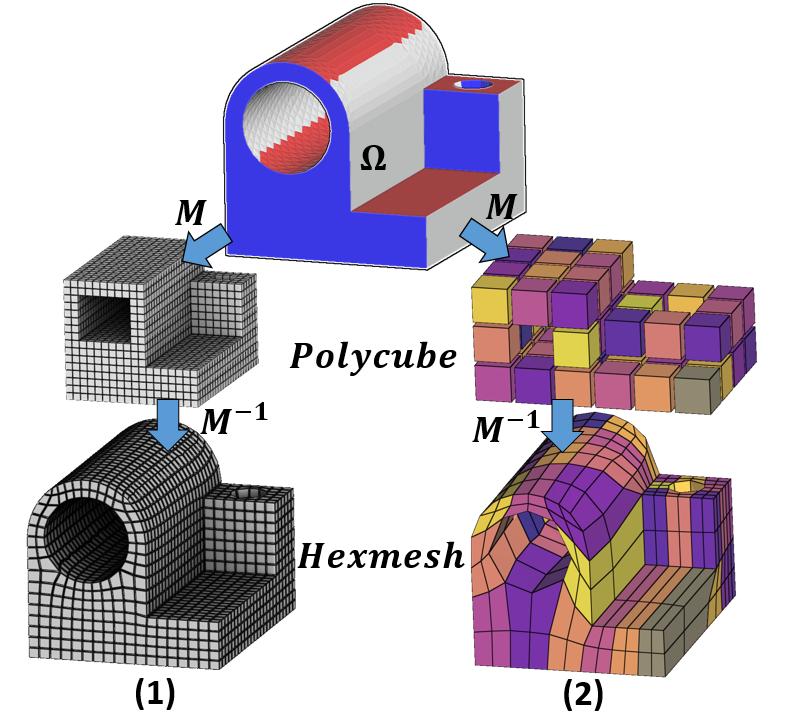Section:
New Results
Coarse polycube meshes
Figure
4. The state of the art allows us to create fine polycube meshes (left), whereas we are trying to create meshes as coarse as possible (right).
|
|
This work is done as part of an informal (soon to be formalized) collaboration between our team and CEA.
Many simulation codes require block-structured meshes.
This requires decomposing the geometric domain into a set of hexahedral blocks, each one being discretized by a regular grid.
Our approach to generate such structures is to generate global parameterizations.
Those methods give promising results in many cases, but still face many robustness issues.
To tackle those issues, we are currently working on a subset of those methods, called Polycube deformation.
The idea is to deform our original domain to align its boundary with a regular grid.
We start by determining a set of constraints on the boundary of .
We then compute a map that deforms the interior according to those constraints into a polycube.
The inverse deformation applied to the polycube produces a structured hexmesh of the domain , refer to Figure 4.
While relying on valid boundary constraints, this method is more robust than global parameterizations methods and gives good results on many models.
We focus on obtaining coarse block structures, a very challenging problem with many robustness issues.
Now we are able to generate as-coarse-as-possible hexahedral meshes (Figure 4, right).
We are preparing a publication of these results.



